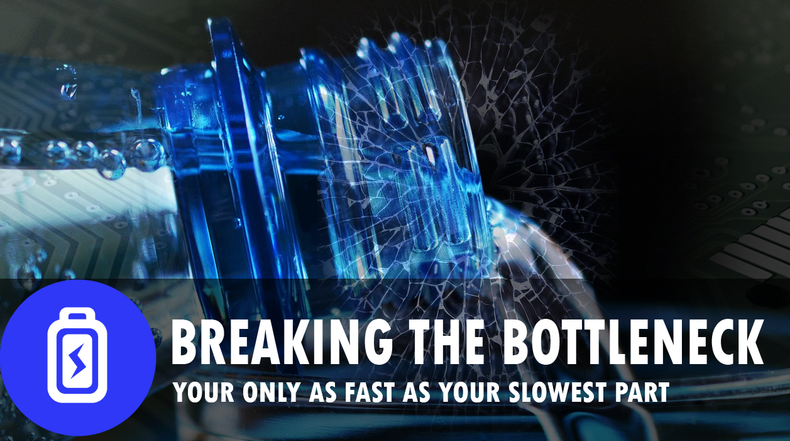I’m a very competitive person, sometimes too much for my own good. I won a fair share of singles tennis tournaments in High school and College – I didn’t really get into doubles until my girlfriend of ten years came into my life.
At first, we would strictly play against each other, but as we learned how we reacted to certain scenarios, we were comfortable enough to play cooperatively in doubles. We were amazing when we first started – we won most of our matches.
But, tension built when we started consecutively losing. It was mostly my fault – I stepped left when I should have stepped right, I didn’t swing as fast or as smoothly as I should have, or I would get faked out too easily from a professionally executed slice. It didn’t feel great knowing I was the reason our performance as a team suffered.
She was the i9-7980XE (the 18 core model), I was the GTX460.
She out performed me by miles!
This happens in the world of computers too – (minus the blow to dignity) when you pair two pieces of hardware that are worlds apart in performance. Theoretically speaking, if you own a high-performance processor like the newer i9 series, but still use a hard Maxell hard drive from the 90’s with a max peak of 600kb read/write speed, your system can only go as fast as your slowest accessible part.
I say accessible for a reason – let’s say you’re trying to run a program that doesn’t require much from your video card. It wouldn’t matter if you had a high-performance one like a GTX 1080ti if the program never needed to utilize it. Sure, a high-performance card would help with other things beside program usage, but the bottleneck would be where performance is squeezed, funneled, and reduced because of the constricting walls of the bottle.
The bottle that’s suffocating the system from performing is the part that is underperforming.
How does it look like?
GPU (Graphics Processing Unit / Video Card) Bottleneck
The most common bottleneck; good CPU but underperforming GPU. Most common in video games, where you’re attempting to execute an application where your GPU does not meet minimum requirements. Just like my girlfriend whom is much faster at reacting than I am, I didn’t meet the minimum skill requirements to be paired with her.
This kind of bottleneck is very easy to spot. Graphical lag is often described as a slide show, where movement is constricted and refreshed on your screen every few seconds. A simple solution would be to turn down your graphic settings and lower your resolution so your GPU does not need to work as hard, but ultimately – you’re going to need a new video card to run the application as intended.
CPU (Central Processing Unit) Bottleneck
The second most common bottleneck. The Graphics engine looks amazing, but your CPU cannot calculate fast enough to keep up with the Graphic changes. Your GPU is sending your CPU instructions to figure out, but it’s unable to process as fast. It generally looks like slow motion video. The only way you can relieve this issue, short from buying a new CPU, is to turn down CPU intensive settings. Particle effects for example take A LOT of CPU power. Trying to figure out the exact positioning of dust particles is difficult when you have to do it 100 million times a second.
Bottlenecks usually happen during partial upgrades, where when you only can afford to upgrade a computer a part at a time. It’s something that should not be confused with a defective upgrade! You should, hopefully, never run into bottlenecking when first building a computer from scratch. It wouldn’t be cost effective to pay for a machine knowing that you will have to upgrade the GPU sooner than expected.
Make sure you can identify bottleneck when it happens – sometimes you can’t avoid it.
Otherwise it can be so off putting that you never play tennis again.
ANY OPINIONS EXPRESS BY OUR AUTHORS ARE NOT THAT OF CENTRALVALLEYCOMPUTERPARTS.COM

